
| PRASENJIT / EANNATUM
Eannatum, King of Lagash, riding a war chariot (detail of the Stele of the Vultures). His name "Eannatum" is written vertically in two columns in front of his head. Louvre Museum
Pasenadi / Prasenjit / Badhryashwa / Ennatum / Entemena (Sumerian: É.AN.NA-tum) was a Sumerian Ensi (ruler or king) of Lagash circa 2500 - 2400 BCE. He established one of the first verifiable empires in history: he subdued Elam and destroyed the city of Susa as well as several other Iranian cities, and extended his domain to Sumer and Akkad. One inscription found on a boulder states that Eannatum was his Sumerian name, while his "Tidnu" (Amorite) name was Lumma.
Conquest
of Sumer :
He entered into conflict with Umma, waging a war over the fertile plain of Gu-Edin. He personally commanded an army to subjugate the city-state, and vanquished Ush, the ruler of Umma, finally making a boundary treaty with Enakalle, successor of Ush, as described in the Stele of the Vultures and in the Cone of Entemena :
Extract from the Cone of Enmetena, Room 236 Reference AO 3004, Louvre Museum 32
- 38 :
39
- 42 :
Eannatum I was king of Lagash, circa 2400 BC Eannatum made Umma a tributary, where every person had to pay a certain amount of grain into the treasury of the goddess Nina and the god Ingurisa.
Conquest outside Sumer :
Eannatum of Lagash in full dress, reconstitution Eannatum expanded his influence beyond the boundaries of Sumer. He conquered parts of Elam, including the city Az off the coast of the modern Persian Gulf, allegedly smote Shubur, and, having repulsed Akshak, he claimed the title of "King of Kish" (which regained its independence after his death) and demanded tribute as far as Mari :
"He
(Eannatum) defeated Zuzu, the king of Akshak, from the Antasurra
of Ningirsu up to Akshak and destroyed him."
-
Inscriptions of Eannatum.
Eannatum, the ensi of Lagash, who was granted might by Enlil, who constantly is nourished by Ninhursag with her milk, whose name Ningirsu had pronounced, who was chosen by Nanshe in her heart, the son of Akurgal, the ensi of Lagash, conquered the land of Elam, conquered Urua, conquered Umma, conquered Ur. At that time, he built a well made of baked bricks for Ningirsu, in his wide temple courtyard. Eananatum's god is Shulutula. Then did Ningirsu love Eannatum".
-
Brick of Eannatum-AO 351, Louvre Museum
Stele of the Vultures :
The so-called Stele of the Vultures, now in the Louvre, is a fragmented limestone stele found in Telloh, (ancient Girsu) Iraq, in 1881. The stele is reconstructed as having been 1.80 metres (5 ft 11 in) high and 1.30 metres (4 ft 3 in) wide and was set up ca. 2500–2400 BCE. It was erected as a monument of the victory of Eannatum of Lagash over Ush, king of Umma, leading to a boundary treaty with his successor Enakalle of Umma.
On it various incidents in the war are represented. In one register, the king (his name appears inscribed around his head) stands in front of his phalanx of heavily armoured soldiers, with a curved weapon in his right hand, formed of three bars of metal bound together by rings. In another register a figure, the king, his name again inscribed around his head, rides on his chariot in the thick of the battle, while his kilted followers, with helmets on their heads and lances in their hands, march behind him.
On the other side of the stele is an image of Ninurta, a god of war, holding the captive Ummaites in a large net. This implies that Eannatum attributed his victory to Ninurta, and thus that he was in the god's protection (though some accounts say that he attributed his victory to Enlil, the patron deity of Lagash).
The victory of Eannatum is mentioned in a fragmentary inscription on the stele, suggesting that after the loss of 3,600 soldiers on the field, Ush, king of Umma, was killed in a rebellion in his capital city of Umma: “[…] (Eanatum) defeated him. Its ( = Umma’s) 3600 corpses reached the base of heaven [...] raised (their) hands against him and killed him in Umma.”.
Eannatum leading his troops in battle. Top: Eannatum leading a phalanx on foot. Bottom: Eannatum leading troops in a war charriot. Fragment of the Stele of the Vultures
Stele of the Vultures
Upper register of the "mythological" side
Detail of the "battle" fragment Other inscriptions :
Inscribed brick of Eannatum, recording the sinking of a well in the forecourt of the Temple of Ningirsu in Lagash
Name of Enneatum on his Ningirsu inscription (top right corner)
Eannatum inscription (British Museum)
A foundation stone of Eannatum, dedicated to Ningirsu, tutelary god of Lagash. It enumerates the victories of Eannatum from Elam to Akshak. Louvre Museum
Foundation stone of Eannatum (transcription)
Inscription Eannatum Ensi Lagashki "Eannatum, Ensi of Lagash"
Eannatum describes his victories over the countries of Elam, Urua, Umma and Ur, and well as the construction of a brick well in front of the temple of Ningirsu
Eannatum King of Lagash presiding at funeral rites on the battlefield (20th century reconstitution)
Clay tablet mentioning the name of Eannatum, prince of Lagash. From Iraq, c. 2470 BCE. Iraq Museum
Fragment of a vessel mentioning the name of Eannatum, prince of Lagash, from Iraq, c. 2470 BCE. Iraq Museum
Stone pebble mentioning the name of Eannatum, prince of Lagash, from Iraq, c. 2470 BCE, Iraq Museum
Stone plaque or tablet mentioning the name of Eannatum, prince of Lagash, from Iraq, c. 2470 BCE. Iraq Museum
Detail. Cuneiform inscription on a limestone object from Girsu, Iraq, mentioning the name of Eannatum, Ancient Orient Museum, Istanbul
Source :
https://en.wikipedia.org/ |
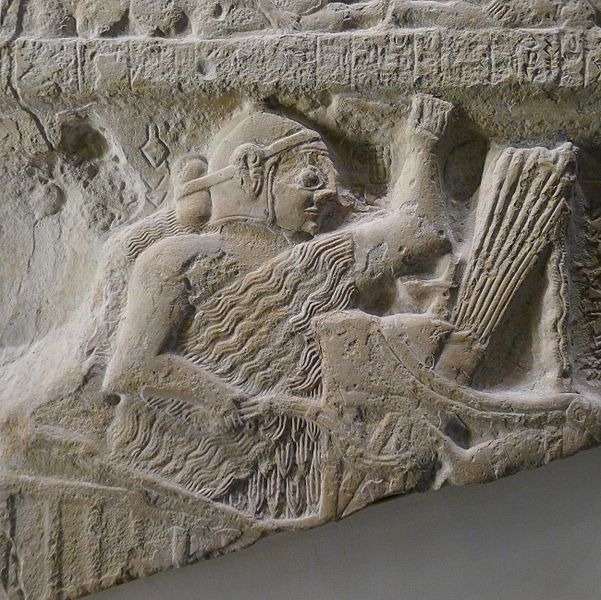
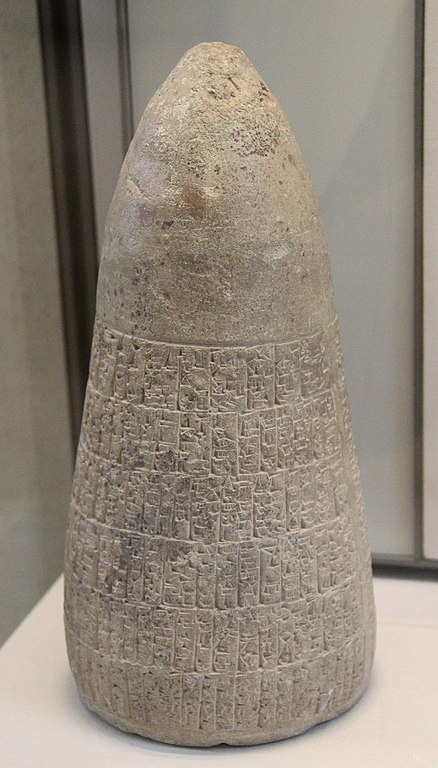
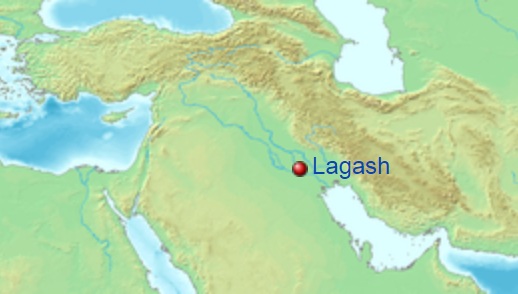
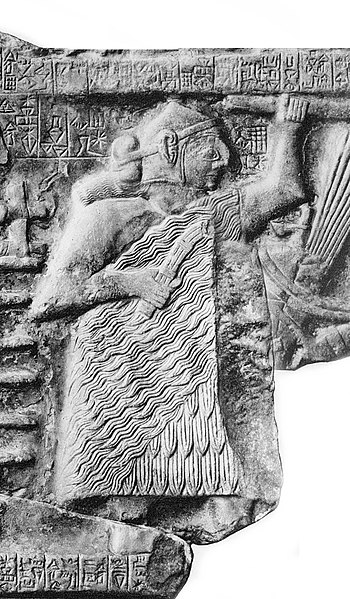
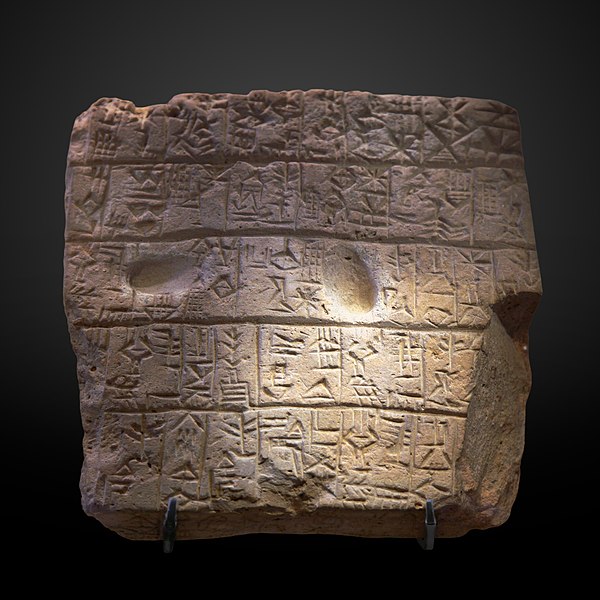
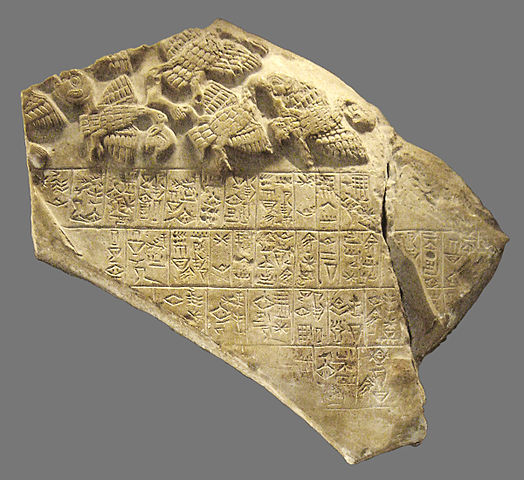
.jpg)
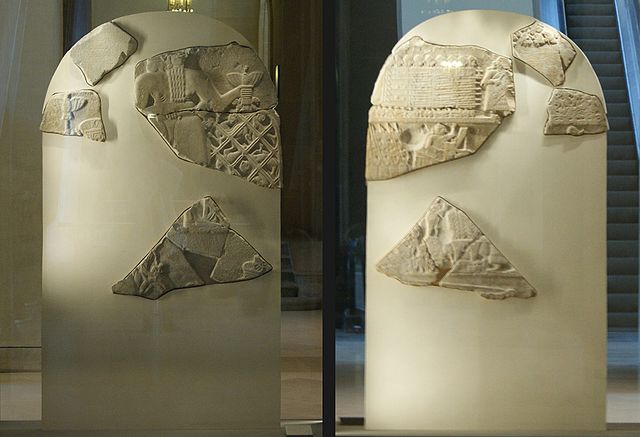
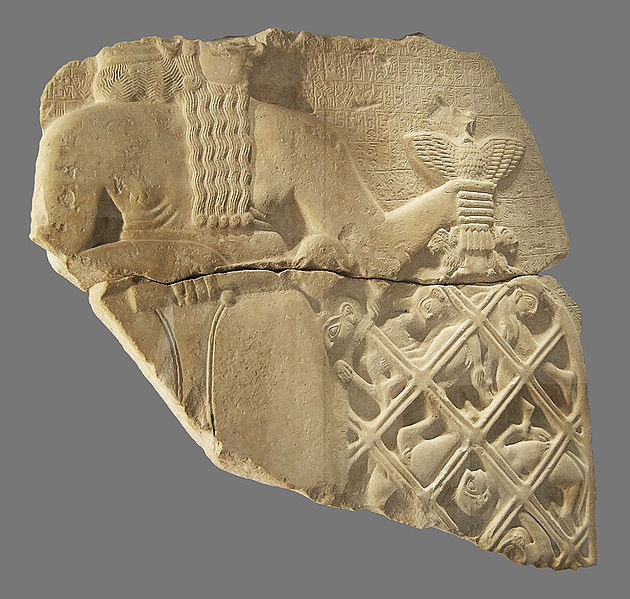
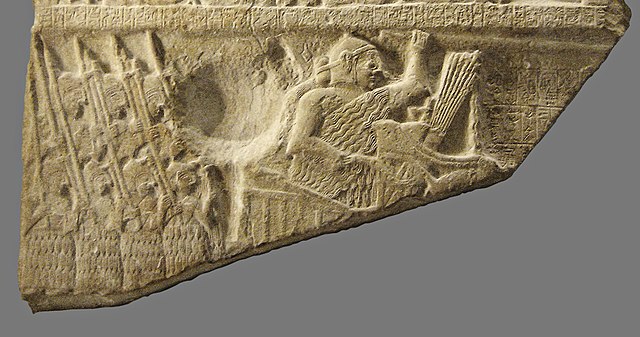
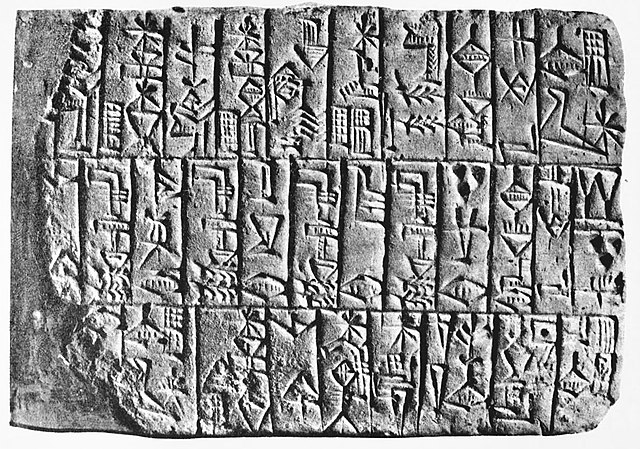
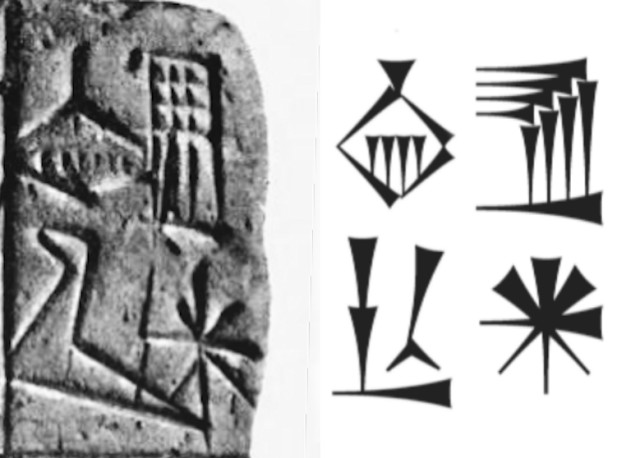
.jpg)
.jpg)
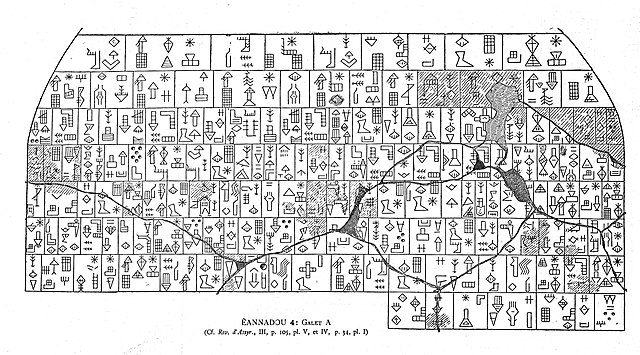
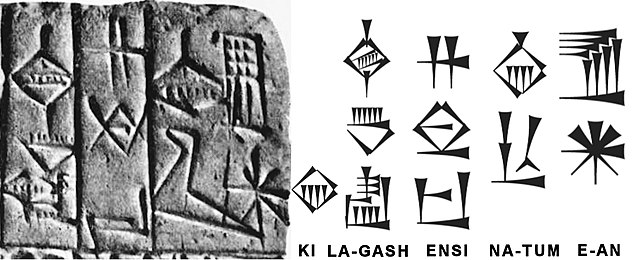
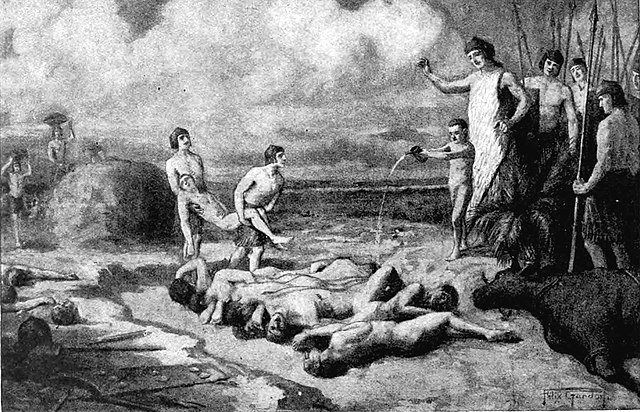
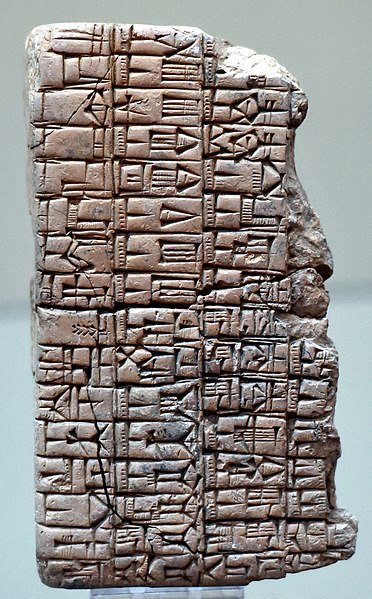
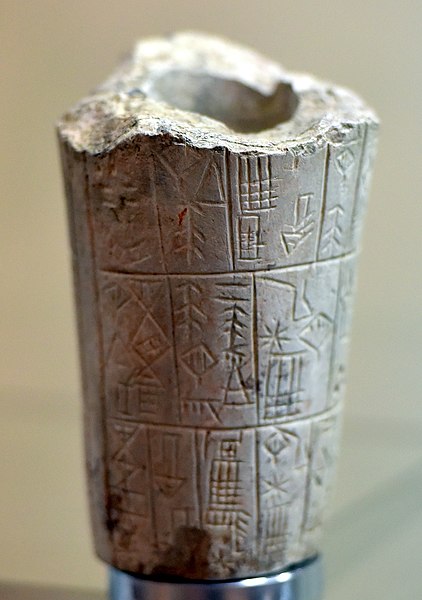
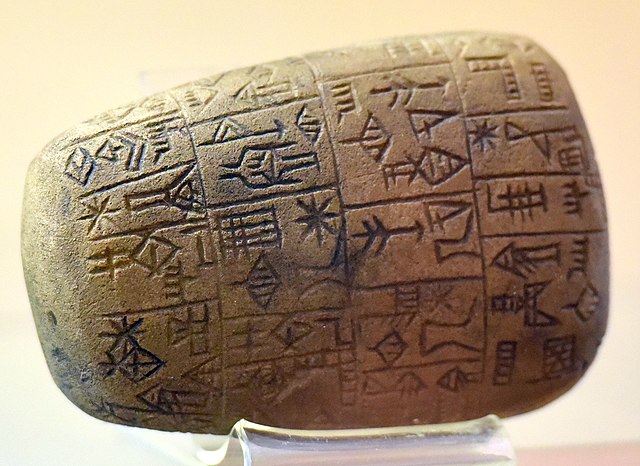
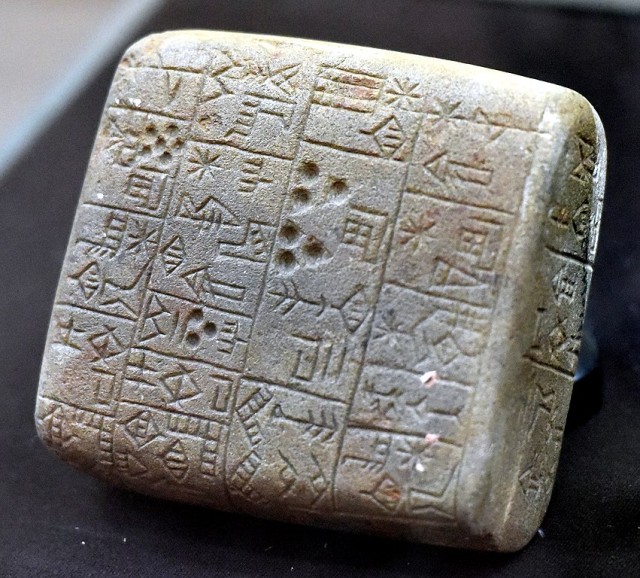
,_ruler_of_Lagash,_2500-2400_BCE._Ancient_Orient_Museum.jpg)